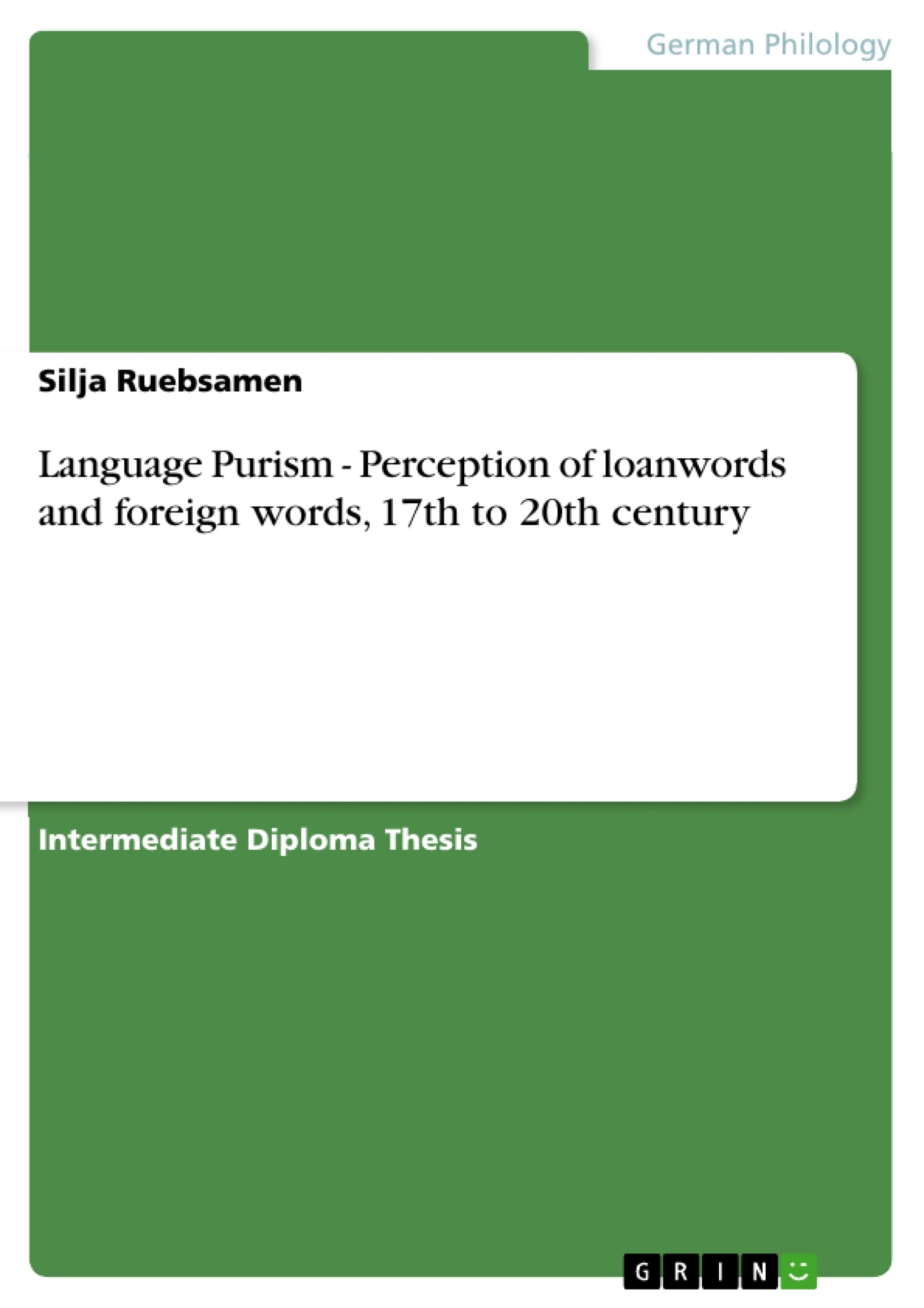Ich mache backup, du hast gedownloaded, wir sind outgesourct worden: Anglicisms, even after they have been assimilated into the German grammar and syntax, often appear out of place and seem a nuisance to many Germans, just because they break up word flow through their seemingly awkward position within the sentence, and because they often cause problems understanding them. More than two thirds of all Germans consider the advancement of foreign words annoying or even alarming, and it comes as no surprise that this number just about corresponds to the number of people who regard unchecked immigration as a threat.
German foreign word-phobia may not be an expression of notorious racism or xenophobia, but there are remarkable parallels and correlations between those two ressentiments, both concerning the time concurrency in which they peaked, and concerning reasoning and wording. In his seinem Traktat über Fremdwörter, Lutz Mackensen noted that
The loanword is a pariah to many. One eyes the other, whose color is different, one gets suspicious. His skin is not like one’s own, so he must be in an area he does not belong to. He is a troublemaker, he is a delinquent. Who accuses him protects himself.
Since the German language prevailed as a language of the vernacular as well as of science, the loanword has always been perceived as a foreign object in the body of the language: a treacherous virus infecting the pure blood of the language, a weed that threatens to poison or strangle the useful plants in a garden otherwise carefully kept. Those Metaphors are organic and therefore quite telling. More worrying, however, are the political analogies in our discussions about loanwords, for example when innocent words are close to terms from not-so-innocent times, such as in descriptions of loanwords as dirty bastards and barbarian hordes that threaten the nation.
... This essay will first outline the general functions of a loanword, then give an account of the history of German language purism between the Baroque in the 17th century and the end of the Second World War. The outlook will take a closer look at the ongoing debate about “Sprachpanscherei.”
Inhaltsverzeichnis (Table of Contents)
- Introduction
- Loanword Functions
- Language purism between the 17th century and the end of the Second World War
- Baroque
- Enlightenment
- Romanticism and pre-March era
- German Empire and Weimar Republic
- Third Reich
- Outlook
Zielsetzung und Themenschwerpunkte (Objectives and Key Themes)
This essay examines the history of language purism in Germany, specifically focusing on the perception of loanwords and foreign words from the 17th to the 20th century. It explores the motivations behind language purism, the historical context in which it developed, and the evolution of attitudes towards loanwords over time.
- The impact of loanwords on the German language
- The historical and cultural factors influencing language purism
- The evolution of attitudes towards loanwords in different historical periods
- The relationship between language purism and national identity
- The contemporary debate surrounding "Sprachpanscherei" (watering-down of language)
Zusammenfassung der Kapitel (Chapter Summaries)
The introduction explores the anxieties surrounding loanwords, particularly those of English origin, and the often-xenophobic reactions they evoke. It highlights the historical context of language purism in Germany, drawing parallels between the perception of loanwords and the discourse on immigration.
Chapter 2 delves into the various functions of loanwords in language development. It acknowledges the inevitable influence of foreign elements on language evolution and emphasizes the distinction between beneficial and unnecessary loanwords. This chapter also explores the historical decline in the number of loanwords, despite their continued significance in the vocabulary.
Schlüsselwörter (Keywords)
The main keywords and focus topics of this text include loanwords, language purism, German language, national identity, cultural globalization, xenophobia, Sprachpanscherei, and the historical evolution of language attitudes.
- Arbeit zitieren
- Silja Ruebsamen (Autor:in), 2002, Language Purism - Perception of loanwords and foreign words, 17th to 20th century, München, GRIN Verlag, https://www.grin.com/document/189367



